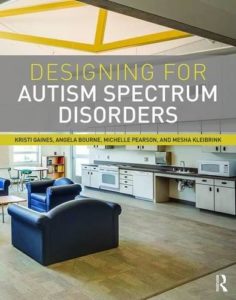“Designing For Autism Spectrum Disorders” Assists In Creating Functional Space
Written by SAPL on November 20th, 2018 in Organization.
If you’ve ever wondered what a room or home designed for someone on the autism spectrum might be built like, here’s your chance to learn.
Today’s abodes are so catered to the needs and desires of those that dwell in them–from environmentally desired features like solar power to the curve of the architecture to recreating a theme from history, the possibilities are endless with the right creativity, the right architects and the right budget.
Designing for Autism Spectrum Disorders is a creation from Kristi Gaines, who spent a lot of time researching design for those with Asperger’s, autism and childhood disintegrative disorder.
So what does an abode for an Asperger feature?
Jokingly, a very ancient blog post suggested covered windows and plain decor.
This is partially true, according to Gaines, who says that the environment can both overstimulate and understimulate those on the spectrum.
“I had seen a lot of children with autism and I knew that the environment could impact their behavior,” she explains.
“If you design for people with Autism Spectrum Disorders, it makes it a better environment for everybody. That’s what the research shows, but I think one of the important things to note is that you have hypo and hyper sensitivities. So, you can have too much environmental stimuli, or not enough. Neither one of those is good. Prior to a lot of the research that we did, people thought that you just have to remove all of the stimulation, make everything really neutral, plain. But, that also, students will not be engaged in that environment, and they tend to withdraw into themselves.”
Like any interior design manual, Designing for Autism Spectrum Disorders is rife with color photographs to illustrate conceptual ideas and contains tips for many types of individuals in a variety of environments.


